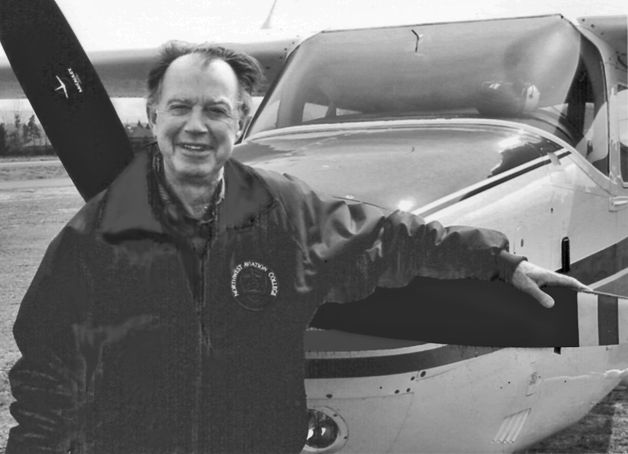The crash happened in the blink of eye, too quick for an awestruck spectator to react.
“I yelled, ‘My God, he’s going to crash,” Don Rottle said.
In a matter of seconds, Rottle – the retired general manager and owner of Auburn’s Rottles Department Store — went from being an onlooker at just another Reno, Nev., air race to being a witness to a tragedy that claimed 11 people and injured dozens more on Sept. 16.
“I was in the box seats with my friends and I watched the airplane above me, but he was erratic and somewhat out of control,” said the 85-year-old Rottle, a private pilot for more than 60 years who has attended the Nevada air championships on 32 occasions since 1969. “(The plane) immediately made him go almost vertical and consequently he probably blacked out and rolled over, heading out over the grandstands, not meaning to do that, of course.”
One moment the “Galloping Ghost” – a World War II-era P-51D Mustang – was racing around the course, banking into a steep left turn and heading toward the home pylon, which was directly in front of Rottle’s box seat. The next moment the plane — manned by Jimmy Leeward, 74, an experienced air racer and pilot — banked left, then right and pitched up.
According to the National Transportation Safety Board’s preliminary report, the “Galloping Ghost” reportedly lost a piece of the airframe, possibly an elevator trim tab that helps control the planes stability. It went through “roll and pitch variations” before descending in “an extremely nose-low attitude and colliding with the gourd in the box seat area near the center of the grandstand seating area.”
“You just heard the roar of the airplane coming down,” Rottle recalled. “I put my head down thinking he was going to crash into us, and when I looked up, it had hit and exploded. It didn’t burn, but it broke into a million pieces, like shrapnel. Thankfully it didn’t burn, there was fuel in there but it didn’t burn.”
According to Rottle, who emerged unscathed along with those in his immediate vicinity, the crash happened a mere 200-250 feet away.
“(My box seats were) No. 615 and 616, and the airplane crashed in No. 40,” Rottle said. “They immediately roped it off. Everyone was just saying, ‘Oh, my God.’ They wouldn’t let people in there, naturally. The medics were wonderful. They did such as a great job. They got the people who were injured off to the hospital.”
Rottle and the remaining spectators were asked to leave the area. He and his friends complied, flying home the next day. The remaining two days of the race were cancelled.
Although Rottle considers air racing no more dangerous than NASCAR, he expects the sport will make changes.
“I’ve watched a few crashes and some fatalities, but never have I seen anything like this,” Rottle said. “Whether they have races again, I don’t know. But I really think they’ll change the rules somewhat. … It was a freak thing, unfortunate.”
The official cause of the crash is still being investigated. It could take six to nine months for the cause to be officially determined.
For Rottle, however, the tragedy will remain with him much longer.
“We were stunned, absolutely stunned, then we realized what happened,” he said. “Thankfully we didn’t get killed, I really thought that was it. I thought I was going to die. It wasn’t my time, I guess.”


